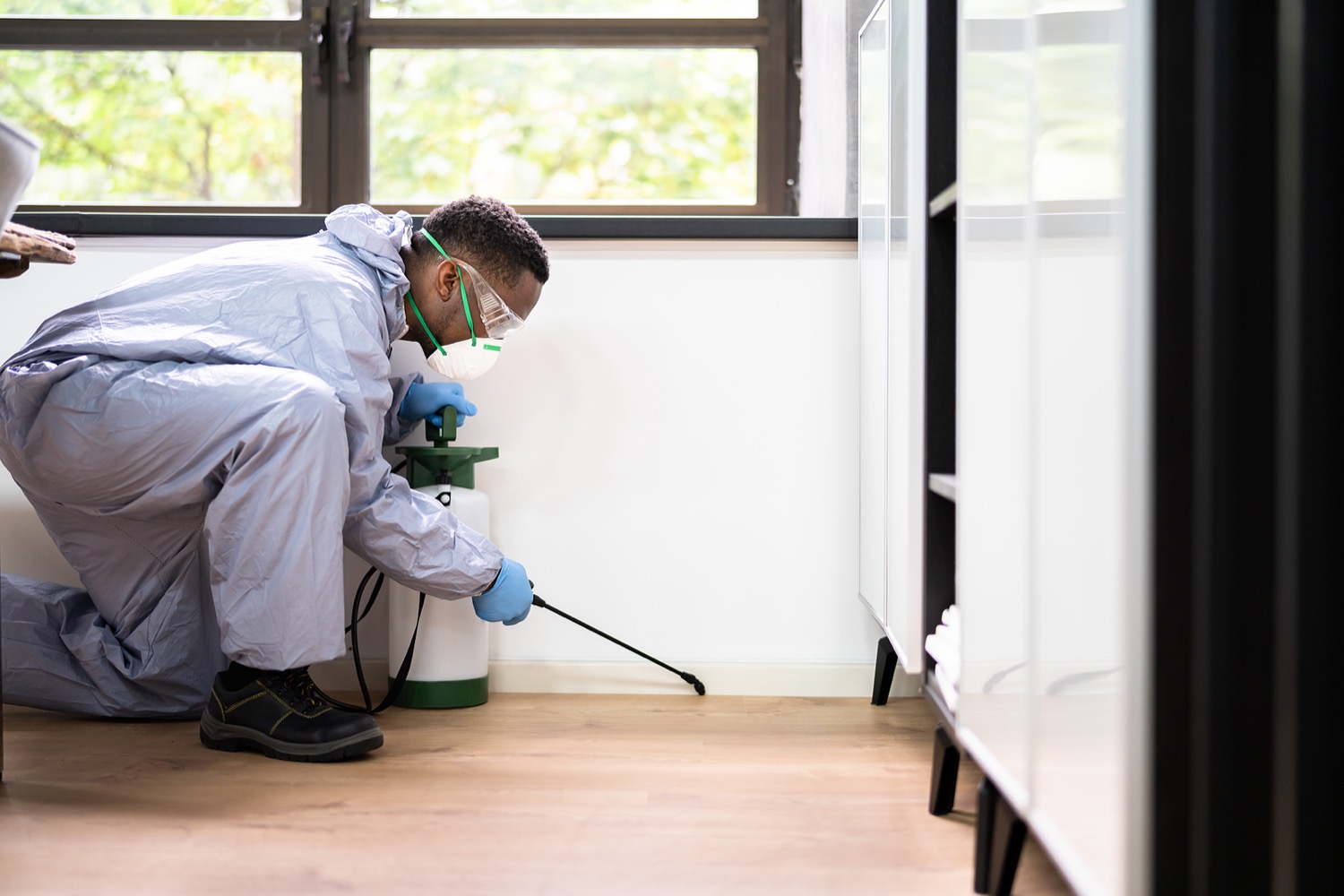A1 Charlotte Pest Control Companies - Your Local Pest Professionals
A1 Charlotte Pest Control Companies - Your Local Pest Professionals
Blog Article
Bed Insect Therapy Malfunction: Contrasting Chemical Vs. Non-Chemical Solutions
In the world of insect control, specifically when managing the persistent problem of bed pests, the option in between chemical and non-chemical treatment services can be a critical one. Both approaches use distinctive benefits and drawbacks, influencing factors such as efficiency, safety and security considerations, and general price. By taking a look at the nuanced information of each approach, a more clear understanding of which path to pursue in addressing a bed bug invasion can be obtained.
Performance of Chemical Therapies
Chemical treatments for bed insect invasions have actually been commonly acknowledged for their potent and fast efficiency in eradicating these parasites. When thinking about the effectiveness of chemical treatments, it is important to comprehend that they can give a quick and comprehensive remedy to a bed pest problem. Professional exterminators commonly depend on pesticides to target bed bugs at different stages of their life process, consisting of nymphs, eggs, and grownups. These chemicals normally function by interfering with the bed pests' nerve system, causing paralysis and ultimate fatality.
In addition, chemical therapies have the benefit of providing recurring impacts, implying that they can remain to get rid of bed bugs also after the initial application. This recurring action is especially advantageous in combating any potential re-infestations. In addition, the rapid activity of chemical treatments can bring alleviation to people facing serious bed pest infestations, allowing them to restore control of their living areas quickly.
Security Worries With Chemical Solutions
When making use of chemical remedies for bed pest therapy is making certain the safety and security of residents and the atmosphere,One crucial aspect that requires careful consideration. While chemical treatments can be effective in removing bed insects, they may position risks if not handled correctly. One of the primary safety worry about chemical options is the prospective damage they can trigger to human wellness. Direct exposure to particular chemicals utilized in bed insect treatments can bring about breathing issues, skin irritation, or various other negative responses, particularly in individuals with pre-existing problems or level of sensitivities. In addition, inappropriate application or dose of chemical pesticides can lead to harmful residues lingering in the cured location, positioning long-term health risks to owners.
Moreover, the environmental influence of chemical options is one more substantial consideration. Some chemicals made use of in bed insect treatments might be damaging to beneficial bugs, wildlife, and ecosystems if they leach right into the soil or water systems. It is vital to use chemical treatments deliberately, complying with safety and security standards, and considering less poisonous alternatives to reduce these threats and guarantee the efficient and risk-free monitoring of bed insect problems.
Benefits of Non-Chemical Approaches
Considering the potential safety concerns and environmental influence associated with chemical services for bed insect treatment, discovering non-chemical methods offers a promising option with a number of distinct benefits. Non-chemical therapies are environmentally pleasant, as they do not add to air or water air pollution, making them a lasting option for parasite control.
Additionally, non-chemical options can be effective in targeting bed pests, including hard-to-reach areas where chemical therapies may not pass through - A1 charlotte pest control companies. Methods such as warmth therapy, vacuuming, vapor cleansing, next and cushion encasements supply detailed removal without the usage of dangerous chemicals.
Limitations of Non-Chemical Treatments

Furthermore, non-chemical therapies frequently need multiple applications to attain successful elimination. This can be taxing and may not always ensure complete elimination of all bed insects and their eggs, specifically in hard-to-reach or covert areas.
Additionally, the success of non-chemical therapies greatly depends on appropriate implementation and thoroughness, which can be challenging for individuals without specialist expertise. Inadequate application of non-chemical methods may site here lead to incomplete removal, causing relentless problems and the need for additional therapies.
For that reason, while non-chemical therapies have their benefits, it is important to recognize these limitations and consider them when determining one of the most reliable approach for managing bed insect problems.
Cost Comparison: Chemical Vs. Non-Chemical Options
Given the constraints connected with non-chemical treatments, a necessary facet to review in the context of bed pest administration is the expense contrast in between chemical and non-chemical alternatives. Chemical therapies typically include the application of insecticides by professionals, which can vary from $250 to $900 per area, depending upon the i loved this extent of the infestation and the dimension of the location to be treated. In contrast, non-chemical treatments like heat treatment or vapor can be extra pricey, with expenses ranging from $1,000 to $6,000 for an entire home. While the initial price of chemical therapies may appear reduced, several treatments might be called for to completely eliminate the infestation, possibly raising the total cost. On the other hand, non-chemical alternatives may offer an extra lasting and environmentally friendly solution, although they can be cost-prohibitive for some people. Inevitably, when thinking about the price of bed insect treatment choices, it is essential to evaluate the upfront expenditures against the performance and long-lasting sustainability of the selected approach.
Verdict

Considering the prospective safety and security issues and ecological impact connected with chemical options for bed bug treatment, checking out non-chemical approaches provides an encouraging choice with several unique benefits.Provided the constraints associated with non-chemical treatments, an essential aspect to examine in the context of bed pest monitoring is the cost comparison between chemical and non-chemical alternatives. In contrast, non-chemical treatments like warm therapy or vapor can be more pricey, with costs varying from $1,000 to $6,000 for an entire home. While the first cost of chemical treatments might appear lower, multiple therapies might be called for to fully eliminate the invasion, potentially enhancing the general expense.In verdict, when contrasting chemical and non-chemical bed pest therapy choices, it is important to think about efficiency, security, benefits, limitations, and price.
Report this page